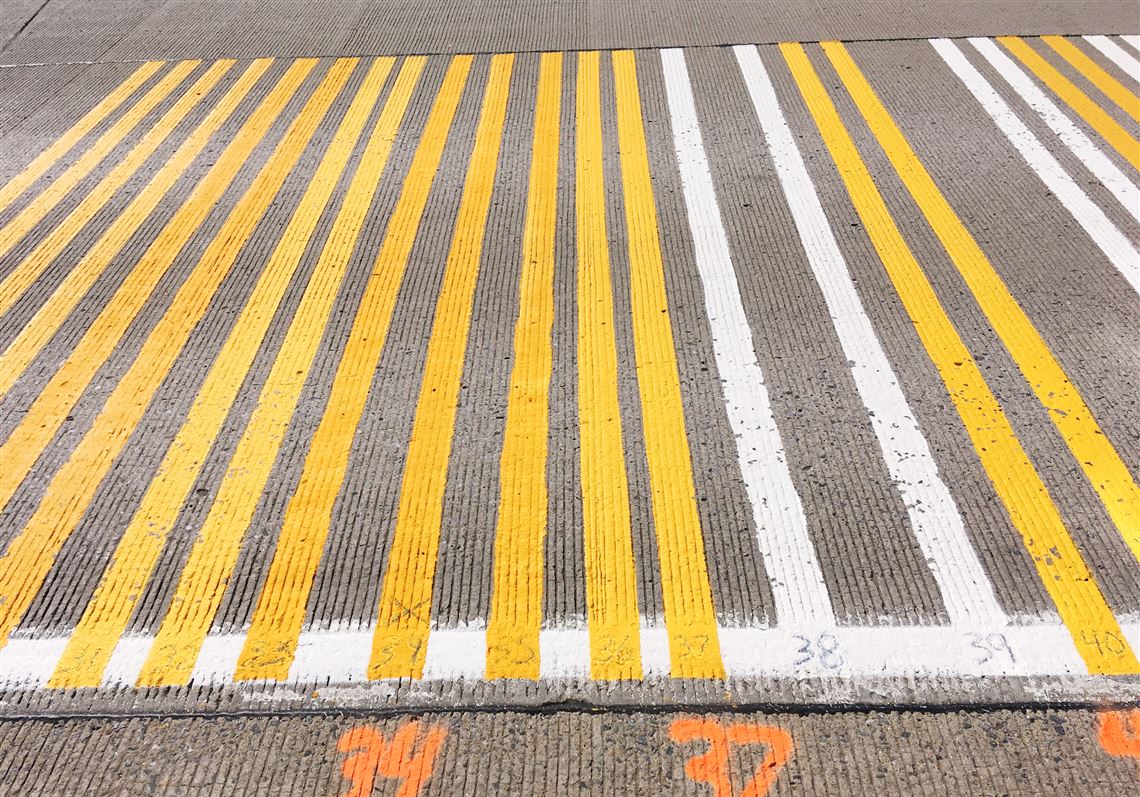Publication: The Pittsburgh Post-Gazette by ANYA LITVAK

Painting the country yellow: PPG mixes a different shade of road paint for each state in the union
Ed Baiden, who heads PPG’s traffic solution business, calls it “the beauty of our system in the U.S.” that each state has its own shade of yellow paint for road markings.
“There’s a Kentucky yellow, a Pennsylvania yellow, an Iowa yellow,” Mr. Baiden said.
Ed Baiden, global general manager of traffic solutions for PPG.
And while the federal highway administration has spent years mulling a change in the width of those yellow stripes from a minimum of 4 inches to 6 inches, 24 states have already adopted the wider standard. And the rest are headed in that direction.
And that means PPG gets to sell a lot more insert-state-here yellow in the coming years.
Here’s a back of the napkin calculation: it takes about 18 gallons of paint to stripe a mile of road using 4-inch-wide markings. PPG estimates there are 8.8 million lane miles in the U.S. An extra two inches goes a long way when the canvas is the entire country.
The Downtown-based paint and coatings maker is relatively new to the road paint game. It launched a traffic solutions business in January 2021, a month after acquiring North Carolina-based Ennis-Flint Inc. which brought that expertise in house.
The business unit has 1,300 employees and about 22 manufacturing facilities, with most of its business focused in the U.S.
It’s not just the color that separates Maine from Mississippi. In addition to paint, PPG also makes thermoplastic markings, which are extruded from a specialized truck and applied to the ground. That’s more popular in the Southern states where snowplows aren’t scraping the road.
States in the North tend to use paint. Striping roads is a seasonable business, Mr. Baiden said. The pavement can’t be cold or wet when new paint or thermoplastic is applied.
Unpredictable, and wetter weather in some states has been shrinking the striping season, whittling the number of days that pavement can be worked on.
That, Mr. Baiden said, is now one of the industry’s biggest bottlenecks. Maybe, it’s also an opportunity.
“When I travel around the country and I talk to customers, that’s the number one product they ask for: a product that can be applied in much colder temperatures or wet conditions,” he said. “That’s something we’re actively looking at.”
The move toward wider lane markings is just one accommodation in the march toward autonomous vehicles.
“If you bought a car less than five years ago, it has some type of driver assist (feature),” Mr. Baiden said. “If you move or swerve lanes, the cameras in those cars are reading the lane markings.”
For now, that means those lane markings should be precise and readable to aid in navigation. But in the future, PPG is looking at how those yellow stripes can actually interact with an autonomous car, perhaps communicating their condition or when it might be time for a touch-up.
The kind of autonomy where “you have a car that you can put grandpa into, program it to take grandpa to the doctor, and bring him back safety — I don’t think we will see that for a while,” Mr. Baiden said.
At best, it will take years of legal wrangling to sort out where liability falls when something doesn’t function as designed.
That, more than any technological advances, is what Mr. Baiden is watching on the world stage.
What will happen in China, where there may be fewer legal hoops to jump through on the way to full autonomy, he wonders.
What about Japan, which has an aging population and an economic incentive to move quickly?
Mr. Baiden, speaking from a trip to a PPG facility in South Africa earlier this month, said he’s watching governments around the world negotiate autonomy and safety.
“We believe that traffic markings will play a critical role in that,” he said.
Anya Litvak: alitvak@post-gazette.com
First Published December 19, 2022, 6:00am
Original link to article: Painting the country yellow: PPG mixes a different shade of road paint for each state in the union | Pittsburgh Post-Gazette

